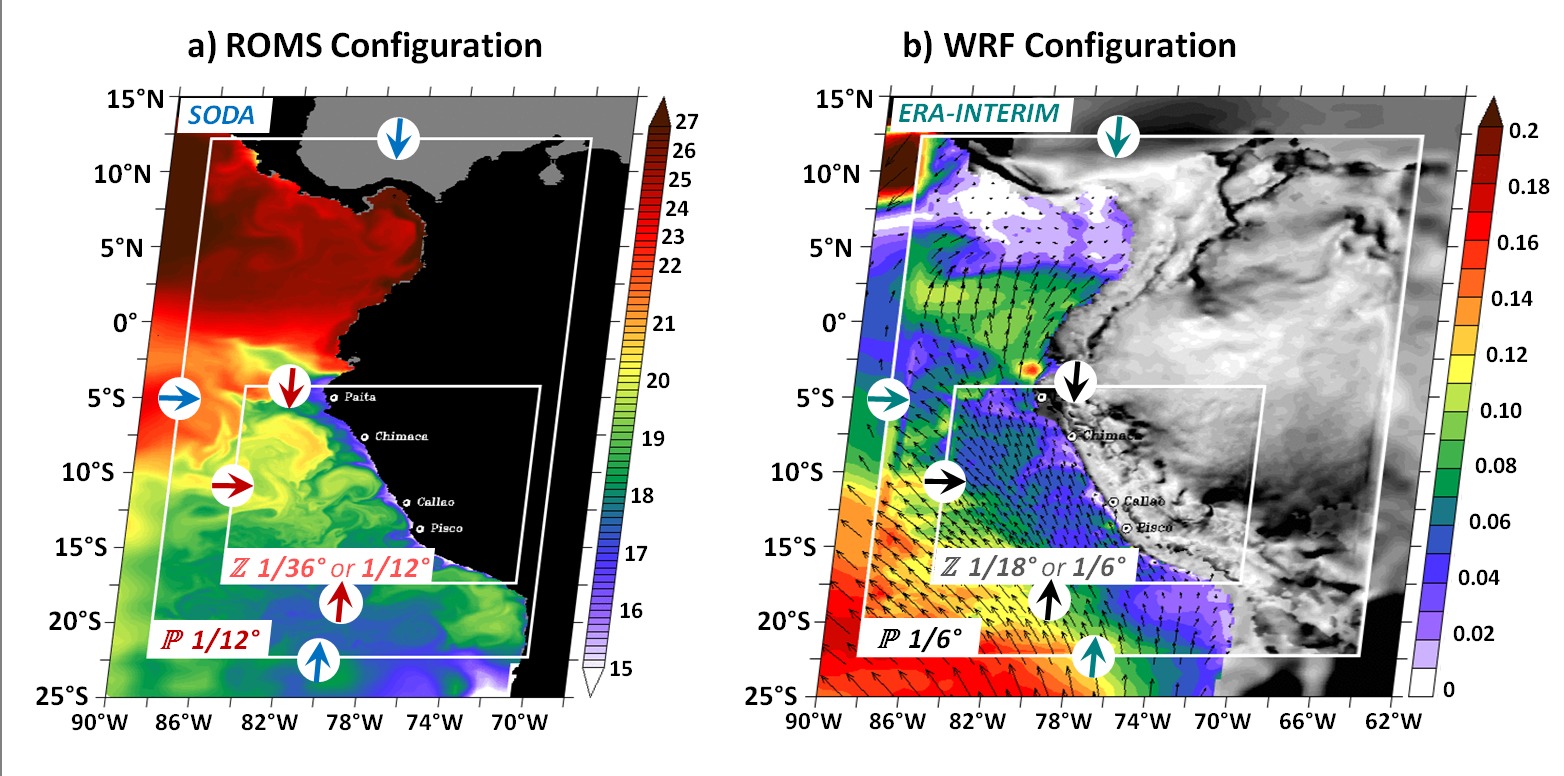Contact Me
Numerical models
I develop and use numerical models of different complexity, ranging from linear models that simulate the propagation of long equatorial and coastal trapped waves, intermediate-complexity coupled models, to non-liear regional ocean-atmosphere coupled models.
Every year, I organize a one-week training on regional ocean modelisation (
 ) and recently I coordinated a workshop on ocean-atmosphere coupling with the ROMS/WRF/OASIS3-MCT coupled system (
) and recently I coordinated a workshop on ocean-atmosphere coupling with the ROMS/WRF/OASIS3-MCT coupled system ( ).
).
 |
The air-sea interactions in the eastern tropical Pacific are key processes influencing the oceanic circulation off Peru at a wide range of frequencies and spatial scales, from those associated with mesoscale activity to those involved in ENSO and climate change. In order to study such processes, a regional coupled ocean-atmosphere system of the South-Eastern Pacific sector has been developed. The system consists in the ocean model ROMS (AGRIF version), the atmospheric model WRF (ARW core) and the generic coupler OASIS3-MCT. The coupled system benefits from 2-way nesting capabilities in both the oceanic and atmospheric components. |
Our configuration (see figure below) has been designed to allow long-term simulations of the Peru upwelling variability and investigate various aspects of the circulation in the region, including those involving up-scaling effects of the mesoscale circulation onto the regional climate. This project benefits from recent observational programs (i.e. VOCALS, AMOP) that allows the validation and tuning of the model, as well as from international collaboration (IGP, UCLA). As a future development, the model will integrate a biogeochemical model developed in the SYSCO2 team and an atmospheric chemical model (WRF-Chem) to address various issues in relation with climate change in this region.






